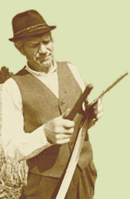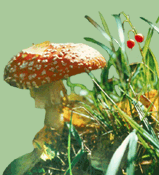The bird of the Year: Swan
Leho Luigujõe introduces us the well-known Mute Swan and less known, but the more noteworthy Whooper Swan and Bewicks Swan. The Mute Swan is the biggest bird in Estonia. The Mute Swan was introduced to Europe in 16th-17th century and it is still rapidly expanding its area of distribution, being quite numerous everywhere in Europe. The Whooper Swan nests mostly in the northern parts of Europe. In Estonia, the first nesting was identified in 1979; now the population has risen to at least 100 pairs a year. The Bewicks Swan is a little difficult to differentiate from the Whooper Swan, but the Bewicks Swan resembles more of a goose than a swan. Estonia is one of the main transit regions for migrating Bewicks Swans, and therefore it is the most numerous migratory swan in Estonia. It nests in tundra regions west of the Ural Mountains.
Estonian Nature enquires
Hannes Palang explains the activities of the newly founded Landscape and Culture Center of the Tallinn University.
Mart Jüssi gives a short overview of discussions held amongst Estonian and North-West-Russian environmental protectionists within the framework of an INTERREG project.
Air pollution crosses state borders
Valdo Liblik and Helen Karu observe a seemingly contradictory phenomenon: the emissions emitted by Estonian pollution sources are altogether different than the depositions of pollutants on the territory of the country. The winds and cyclones carry industrial and other human-caused wastes far from where they were generated. Therefore, international and transboundary cooperation between countries is needed to control transboundary air pollution. With this aim in mind, the Convention on Long-range Transboundary Air Pollution was signed in 1979 in Genf. The present article focuses on the main air pollution waste groups handled by the Convention, their sources, amounts and influences on people and ecosystems. The article is supplemented with tables and graphs illustrating the issues of transboundary air pollution.
Re-organized Estonian nature conservation system
Riina Martverk looks at reasons behind the restructuring of Estonian nature protection system and admits that some of the shortcomings are still present in the new system. The new state administration, founded in January 1, 2006, is called State Nature Conservation Center. The new system now encompasses all protected areas of Estonia, and the territory of the country is divided into 8 regions and 3 regional boards. The main task of the Center is the practical enforcement of nature conservation: first and foremost, to guarantee the conservation management plans for species and protected areas. The main remaining problem is related to governing: while the Center organizes and manages the practical nature conservation activities, the protected areas are still governed by county environmental services.
Essay: Some thoughts on the evolution of Homo Sapiens by Jaan Kaplinski
Udria landscape protection area
Piret Kiristaja speaks highly of the poorly known section of the North-Estonian Klint, not far from Narva-Jõesuu in Ida-Viru County. In addition to the klint section, there are valuable habitats such as vegetation-covered sand beaches, forested dunes, dry meadows on lime-rich soils, limestone denudations, old broad-leaved forests and cliff forests. There is also one of the mightiest groups of erratic boulders in Estonia along the coast.
European rarities in Estonia: Boros schneideri
Ilmar Süda takes a glance at the present and future of an extremely rare relict species, a rather modest-looking beetle Boros schneideri. In Northern countries it mostly inhabits old-growth pine forests, but in Estonia it has also been found on dead oak and birch trunks. Altogether there have been 7 findings of the species in Estonia. The main threat to the beetle is forest felling in old-growth pine forests.
Interview: The secret behind a good nature photograph patience and a camera with a long objective
Toomas Kukk has interviewed Aavo Põlenik, a nature photographer.
Hiking trail: In the bogs and forests of Alutaguse
Anne-Ly Ferðel suggests taking a hike on the Kotka hiking trail near Iisaku, in Ida-Viru County. The diverse nature is enriched with colourful folk tales. As Alutaguse is a boggy and forested region, the hiking trail also features mostly the above-mentioned landscapes, but also an esker system with the highest point of 94 m a.s.l. There are also two look-out towers along the 8 km-long hiking trail.
To the sea, by all means
Erna Sepp is concerned about the negative aspects of urban sprawl, exemplified by the case of the Mäeranna dwelling area, a new seaside residential area west of Tallinn. The real estate developers seem to take no time to consider the natural preconditions of the new residential area, and therefore problems are caused both to newcomers as well as old inhabitants. The geological constructional research has indicated that the area may become very wet because of the high level of ground water. Besides, in the course of real estate development, a lot of local natural values have been destroyed.
Brachiopods have no arms
Oive Tinn and Tõnu Meidla introduce Brachiopods, a group of species that was once very species-rich and is now mostly survived as fossils. The authors introduce the biology and construction of the Brachiopods and give an overview of their evolution. Since the Brachiopods are the most numerous, best-preserved and best-researched among our fossils, the article is illustrated with numerous samples of fossils of different Brachipod species found in Estonia.
Hated and loved
Sven Zaèek writes about his meetings with wolves and why he has always felt happiness about these encounters. Wolf is a difficult animal to meet, and the more valuable these encounters are. High-quality nature photographs by the author, a young nature photographer give us a sense of these encounters.
| 

![[IN ENGLISH]](images/gb.gif)






